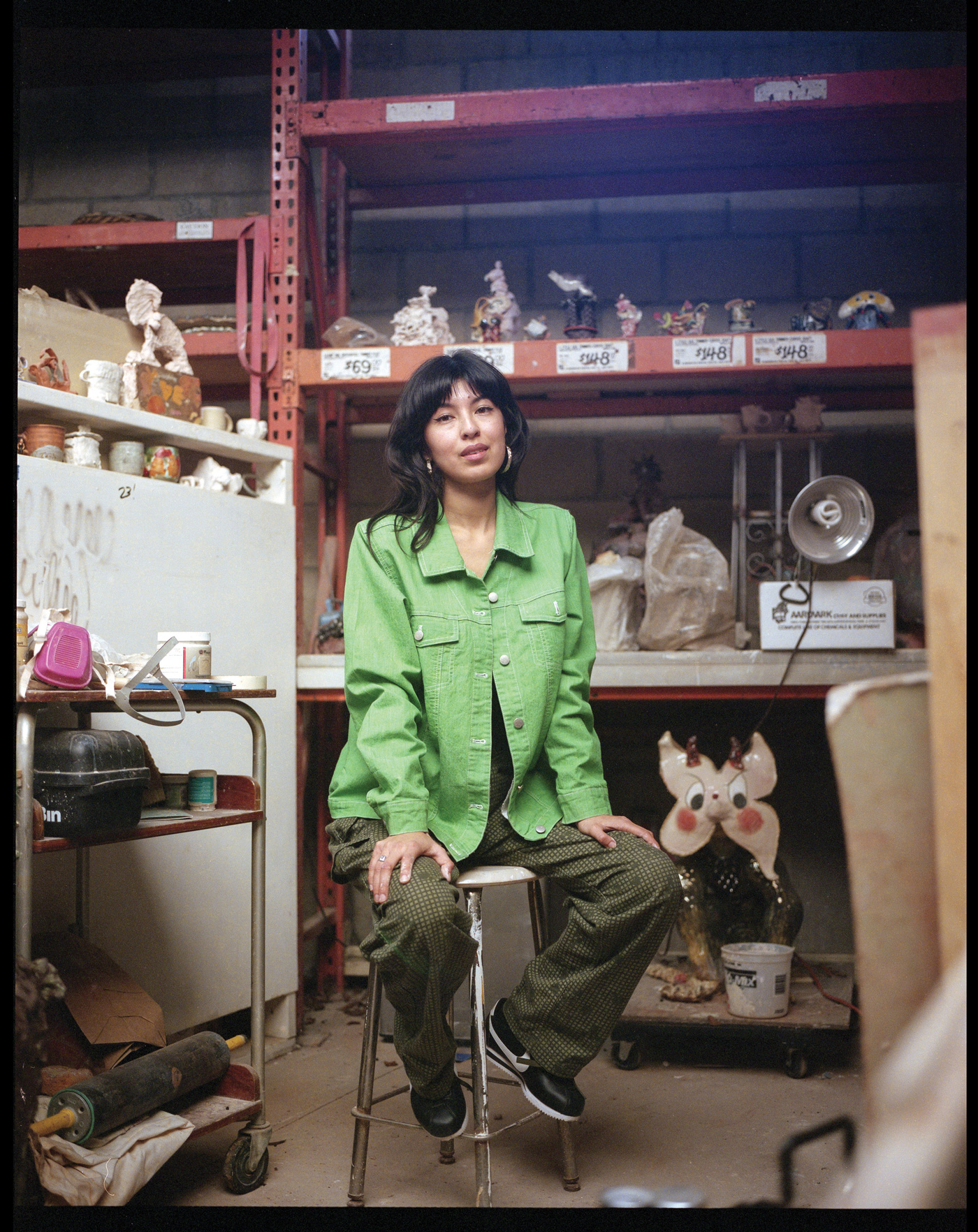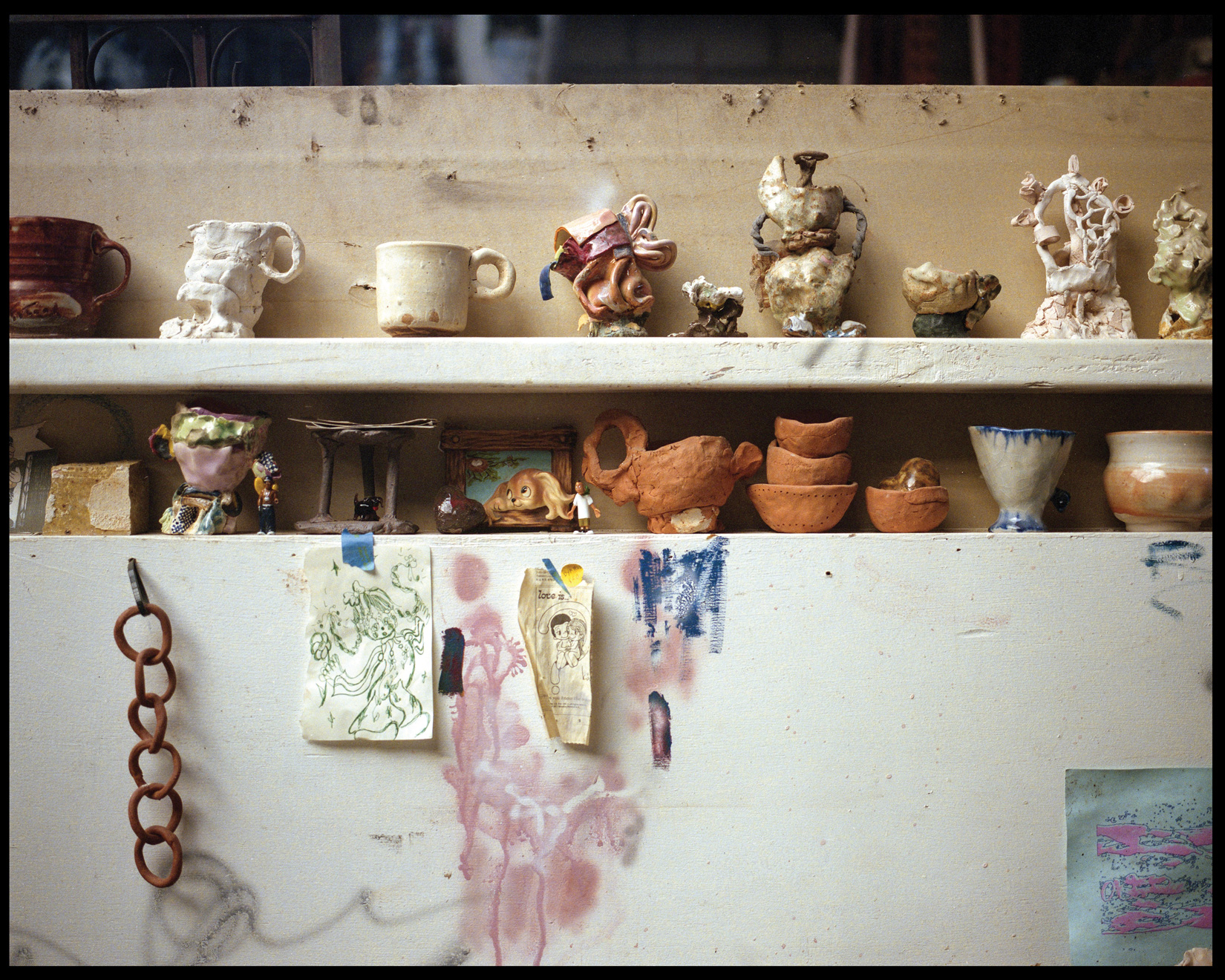This feature on Diana in upcoming issue 19, out March 28th. Available for preorder here.
Diana Yesenia Alvarado’s clay sculptures present a sense of childhood with an innate twist of Los Angeles. Each of her sculptures contains figures that I saw growing up in a predominantly Latinx neighborhood. The distinct and quintessential symbolism that is depicted through Alvarado’s gestures may visually depict the sounds, smells, people, and colors of her neighborhood in Southern California, but her work touches people outside the confines of her city.
Alvarado’s work carries many emotions. When first encountering her work, I gravitated to her infamous ‘smile now, cry later’ sculpture, and even though it wasn’t from my generation, I was familiar with it tatted on my cousin’s brown skin during hot summer days. In other works, she invokes the payaso (clown), but not just your typical clown, rather one that is sad, beaten, and from the barrios of Los Angeles, painted to suggest those emotions and sentiments. On the other hand, the colors and characters that show up in Alvarado’s sculptures are especially emblematic of the colors and figures found around the streets of Los Angeles and all that it has to offer—hand-painted characters on the side of liquor and grocery stores, the multi-colored lettering on the window of the party supply store. It’s all a representation of Alvarado—her culture, her neighborhood, her community.

Tell us a bit about yourself and how you got into art?
I grew up in the South East and the East Side of Los Angeles. Since elementary school, I was drawn to making art and being creative but didn’t recognize it as anything. In high school, I was passionate about film and photography and attended community college to take different art classes. I had these creative interests and a collection of things I made—recordings, photographs, paintings, drawings—but I was passive and somewhat careless about my practice. Finally, when I transferred to Cal State University, Long Beach and was working with clay, I was at a point where I was tired of half-assing myself and decided to develop discipline and focus my attention. So although my interest in art started when I was a young child, it took many years to get out of my own way and actually pursue it.
What do you do outside of making art, and does that influence your work?
I recently started working for a jeweler helping make ceramic components. Working in an environment that requires very polished work contradicts my instincts of working clay in an aggressive manner. It’s teaching me to handle clay in a different way and get a really fine finish if I want to. I have found myself considering what side to turn on when I work so I guess to some extent, my job has influenced how I approach the material I’m working with.
Who are your artistic influences? Who are you looking at?
I am very fortunate to have found a community of artists and friends who all uniquely inspire my work and push my personal boundaries. Most recently, I visited Museo Universitario Arte Contemporáneo in Mexico City and checked out the Ruben Ortiz Torres retrospective. That show left me excited to get back to work. In reality, going on a walk or car ride through my neighborhood and observing its sounds, smells, people, and colors influences my work the most.


What experience do you want your audience to have with your work?
I like my work to be interpreted in different ways. There is a pleasure in curiosity and discovering things for yourself. However, I do always value when the work allows the person to tap into a fond memory or experience in their life.
I see a lot of symbols and figures from my childhood in your work, but at the same time they’re haunting, are they supposed to be monsters? Or fears?
Although they can be interpreted that way, they are not reflections of my fears.
Where do you pull inspiration from for the figures you sculpt?
That work, in particular, was made after watching old Disney cartoons. I would find myself laughing in the studio thinking about these characters. They reflect such a creative and innovative time in animation that it left an impression on me. Revisiting these cartoons took me back to my childhood and resulted in a handful of sculptures including this one. They are made from a curious, playful place and bring out similar feelings of nostalgia.

Why is it important that these works are sculptures and not paintings?
It’s the material that is most important to me. Building three-dimensional forms with clay engages me in a way I love. I find the process very challenging and it serves as my humbling teacher. I enjoy doing things that require me to problem solve and push me to discover. Working with clay fulfills those desires, so I let myself explore it. I am open to other mediums but for now, working with clay has felt the most natural.
How do you decide on the color and shades of your sculptures?
You never have complete control over how a glaze will turn out, so I prefer to let the colors mesh and figure things out as I go along. I like to layer glaze, fire the work, and react based on what I see. I treat them like paintings and work them until it feels right to stop. Usually, the form will guide me and I just keep going until I have achieved a certain mood, balance or find myself getting too obsessive.
Where do you see your work going in the next few years?
I’ve only just started. I really have so much to learn and want to continue nurturing my practice.
For more from Diana, follow @deealvarado on Instagram.
Photography by William Camargo.
